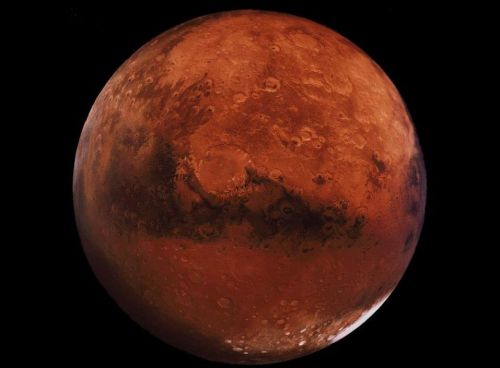 Adding to the growing literature on possible life conditions on the Red Planet, new research from NASA’s Mars rover Curiosity shows that it is possible that there is liquid water close to the surface of Mars.
Adding to the growing literature on possible life conditions on the Red Planet, new research from NASA’s Mars rover Curiosity shows that it is possible that there is liquid water close to the surface of Mars.
The explanation is that the substance calcium perchlorate has been found in the soil which lowers the freezing point so the water does not freeze into ice, but is liquid and present in very salty salt water – a brine.
“We have discovered the substance calcium perchlorate in the soil and, under the right conditions, it absorbs water vapour from the atmosphere. Our measurements show that these conditions exist at night and just after sunrise in the winter,” said Morten Bo Madsen, head of the Mars Group at the Niels Bohr Institute at University of Copenhagen.
Based on measurements of humidity and the temperature at a height of 1.6 metres and at the surface of the planet, scientists can estimate the amount of water that is absorbed.
When night falls, some of the water vapour in the atmosphere condenses on the planet surface as frost.
But calcium perchlorate is very absorbent and it forms a brine with the water so the freezing point is lowered and the frost can turn into a liquid.
The soil is porous so what we are seeing is that the water seeps down through the soil.
“Over time, other salts may also dissolve in the soil and now that they are liquid, they can move and precipitate elsewhere under the surface,” Madsen said.
New close-up images taken by the rover all the way en route to Mount Sharp show that there are expanses of sedimentary deposits, lying as ‘plates’ one above the other and leaning a bit toward Mount Sharp.
“These kind of deposits are formed when large amounts of water flow down the slopes of the crater and these streams of water meet the stagnant water in the form of a lake,” Madsen said.
When the stream meets the surface, the solid material carried by the stream falls down and is deposited in the lake just at the lakeshore.
“The sediment plates on the bottom are level, so everything indicates that the entire Gale Crater may have been a large lake,” the authors said.
Nearly 4.5 billion years ago, Mars had six and a half times as much water as it does now and a thicker atmosphere.
But most of this water has disappeared into space and the reason is that Mars no longer has global magnetic fields, which we have on the Earth.
The magnetic field protects the Earth’s atmosphere against degradation from energy rich particles from the Sun.
The results were published in the scientific journal Nature.